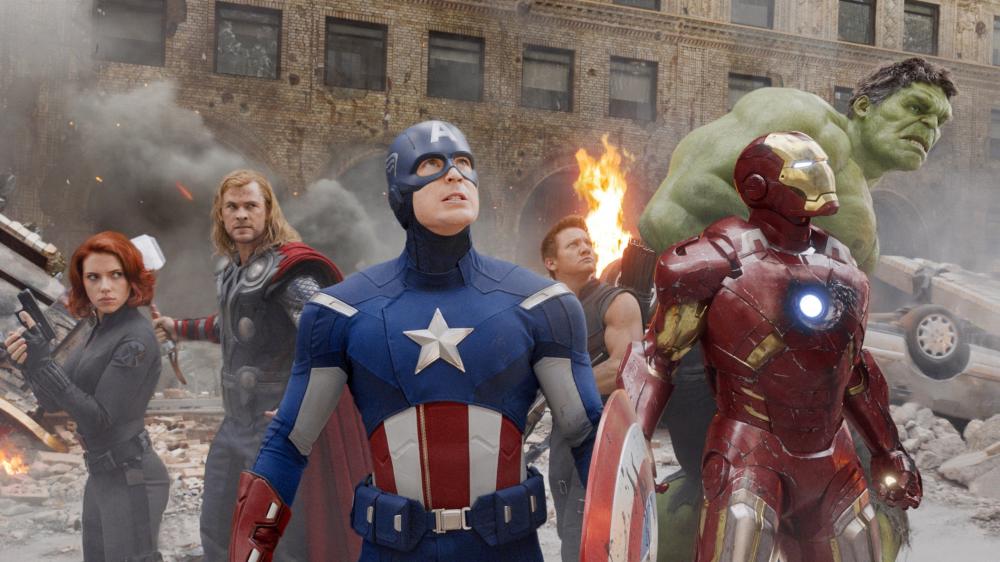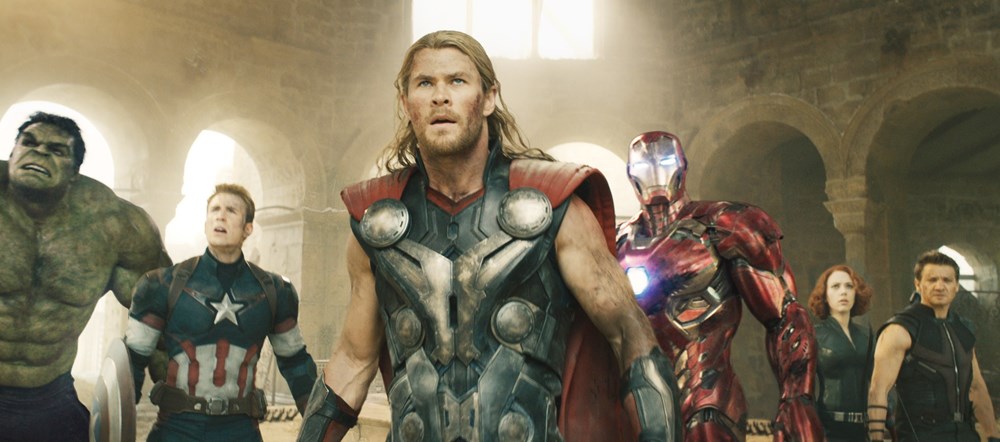
Early July, Paramount changed things. The change won’t be immediate, nor is it guaranteed that it’ll catch on at all in this particular iteration. But they made a move that, while seemingly just a smart way of dipping a toe into the waters of alternative distribution for non-guaranteed studio projects, is also going to draw a lot of attention. If it doesn’t work, somebody else will find a way to make it happen. If it does, they have the unique opportunity of being at the vanguard of the next wave of modern film distribution and consumption. Whether that’s a good thing or not probably depends on the extent to which you, too, cringed, internally or otherwise, at the word “consumption” being used to describe the viewing of a film.
And for the melodrama of that last paragraph, Paramount’s new gambit completely warrants it. On July 8th, the studio announced that they had reached a deal with AMC Theatres and Canada’s Cineplex Inc. to release the upcoming films Paranormal Activity: The Ghost Dimension and Scout’s Guide to the Zombie Apocalypse on VOD/on-demand home rental services only 50 or so days after their theatrical releases, ensuring that people can continue to text during movies with impunity.
They’re a good pair of initial test subjects: Paranormal Activity has seen diminished returns over its three sequels and one spin-off, and The Ghost Dimension will be hitting theaters nearly two years to the day after its originally announced release date in October 2013. As for Scout’s Guide, it was bumped to the fall from March of this year, after also being renamed from the more succinct Scouts vs. Zombies.
Again, they’re both excellent guinea pigs. Even setting aside the dramatic depreciation that even the most successful genre movies typically experience from week to week, there’s the matter of the threshold for an acceptable box office return being far lower for either film than it would be if, say, Paramount decided to launch this experiment with the next Transformers. (This, at least, would allow that film to shamelessly beam advertisements into your home around a loosely assembled movie with even greater ease.) While other heavy-hitting distributors like Regal and Cinemark weigh the merits of this new model, it’s hard to fault AMC for getting in on the game. After all, times are tough for theaters, no matter how many times people race back out to see Jurassic World orInside Out yet again.
Digression time, and briefly, but 2014’s box office hit a 20-year low. Any number of reasons have been cited for this: the exhaustive parade of mega budget sequels and franchise properties, the decline of the theatrical experience in the smartphone age, the quality of modern movies, the overpriced theaters themselves. Since each of those bullet points arguably deserves its own series of lengthy essays, let’s just focus on that last bit — the theaters. Everybody has their own story (and if you want to leave a comment to this effect, please do), but since CoS is a Chicago-rooted publication, let’s talk numbers in Chicago as they currently stand.
On average, a movie ticket to a local AMC or Regal theatre is $7-13 dollars, depending on the time of day. Concessions, the real cash cow for any big-time theater giving most of the ticket income right back to the studios, will run you $6-8 for a popcorn, $4-6 for a drink, and that’s to say nothing of candy or the bars more and more theaters are installing of late. (More on that later.) So, already the trip is running you an estimable average of at least $20 for yourself. Want that screening in 3D? Add another three or four dollars. Make it another few more if you want it on an “IMAX” screen, most of which are just the “super screens” of yore re-branded and up-charged into oblivion. So, now you’re getting into the $25-30 range. That doesn’t even include parking and assumes it’s just you. Have a family of four? Suddenly you’re spending over $100 for the privilege of watching little, yellow corn men holler nonsense or something to that effect. And broken down that way, it’s not particularly hard to understand why people aren’t going to the movies.
Attendance is always huge for big summer spectacles (unless your film happens to be named Terminator Genisys, anyway), but it’s low-budget fare like Paranormal Activity that stands to benefit most from Paramount’s bold new model. In this way, for at least a while, going to see a film in a theater can be an opening-weekend event for those desirous of such a thing, and for the people who don’t care, or would rather just watch a new movie at home, now they only have to wait a month or so. And theaters have been struggling of late; Disney recently fought with theatrical distributors over Age of Ultron in an attempt to micro-regulate theaters’ abilities to offer discounts, so as to boost overall profits as much as possible. The recent monetary struggles of studio films in their theatrical phase has led to everybody getting chippy on every side, attempting to retain their part of an old structure as the whole thing starts to crumble, and therefore it’s unsurprising that, as one anonymous exec told The Wall Street Journal, Paramount’s gambit is “the edge of the sword.” Sooner or later, somebody was going to at least try it.
It does, however, cast an even longer shadow over the big question nobody really seems to want to answer: How badly do people want, and perhaps more importantly need, to see their movies in a theater? For years, the model has been shifting as streaming services have offered at least the early steps along a new path, one that sends films straight to the consumer and eradicates the middle men, at the cost of sacrificing the communal experience of the theater. Theaters all over the U.S. have been trotting out any number of new devices to attempt to combat this, from the aforementioned “IMAX” theaters to Dolby’s new Atmos sound system to electronic Barcaloungers in screening rooms to bars and restaurants in the theaters themselves. That last bit seems to be the most telling in examining audience preferences and theaters’ attempts to kowtow to them: to rouse themselves from the home, people have to be able to do an entire evening out in one shot. By letting people cut out the trip to the bar or to the restaurant across the parking lot, you cut out the chance that people could call it an early night and head home. Some may call that efficiency and savvy. Others, desperation.
The other massive change suggested by Paramount’s new distribution model, one that seems to have gone relatively unheralded in talk of it, is what this would do for the reputation of the straight-to-home film. Ever since the advent of the VHS in the ‘80s, there’s been a clear line between movies that come out in theaters and movies that don’t. Movies that come out in theaters are events worth lining up for; movies that go straight to home video usually star Dolph Lundgren. In recent years, this has changed, with VOD services allowing filmgoers both casual and serious to choose which films they’ll leave the house for and which are rented. There’s now the movie you go to the theater to see on opening weekend, the one you see after a few weeks when it’s less crowded, the movie you wait to Redbox, and the movie you wait to hopefully order right from your TV. In certain respects, it’s no different than the scenarios offered by the VHS or DVD, but now the timing is changing. Don’t feel like rousing yourself from your comfortable couch in the dead of winter to see a documentary across town? There’s a decent chance it’s already sitting right on your TV.
What’s going to change that reputation isn’t the distribution model, per se, but how it’s used. In a post-Netflix world, the best filmmakers aren’t necessarily working exclusively toward a big theatrical release any longer. Earlier this year Spike Lee released Da Sweet Blood of Jesus exclusively on Vimeo, nearly a month before its limited arthouse rollout.Joe Dirt 2: Beautiful Loser debuted this past week on Crackle, Sony’s VOD service. Adam Sandler, perhaps that first example’s most distinct polar opposite, has signed a multi-film deal with Netflix for his upcoming releases, and the Duplass brothers recently followed suit. For filmmakers either looking for a more lucrative model in a tumultuous, focus group-centric time for studios, or even those like the Duplasses (Duplassi?) who simply prefer to play in a smaller, more controllable sandbox, streaming services like Netflix are already offering a way out of the crowded studio landscape.
To a certain extent, this is a great thing. Independent filmmaking has become its own lucrative beast in the time of the “Sundance hit” being the gold standard, and so even with studios like Fox Searchlight and Focus (at least the Focus of the early aughts, if not the one at present), the ostensible goal is still to manufacture a low-budget smash hit. Independent filmmaking in its rawest sense has largely moved online, because there, the sort of person who’d chase out to their local independent theater can find whatever they want. It’s also eradicated so many of the hurdles that used to accompany a cinephile’s early years if they didn’t live in a major urban center. (Often I lament that I didn’t become obsessed with film in high school when so many would have been at my eager fingertips. But it would’ve come at the expense of learning things like basic human interaction, so that’s probably just as well.) In so many words, streaming services have made it a lot easier for people to fall in love with the cinema, and that’s usually the point. Right?
But every frontier eventually sees a conqueror, and Paramount might be that. Much of the impetus for so many independent films’ recent reliance on VOD is the relative impossibility of getting them into major theaters. Because of chains like AMC and Regal and Cineplex Inc., the same chains hashing out this momentous decision with Paramount, so many American films released in a single calendar year won’t be seen by more than a few thousand people. VOD has offered a way for the dedicated cinephile to escape the exhaustion of going to a 20-screen theater where only a half dozen movies are playing, as they are at every other similar theater in the area at the same time, probably.
For Paramount or any major studio to move into that space, then, is to continue the problem that’s been plaguing theaters for decades now: How does everybody get a place at the table when the latecomers are taking up so much space? The answer, in its numerous iterations so far at least, is that they don’t. The heavy hitters will dominate the conversation, and the rest will clamor for whatever remains. This isn’t to say that no studio should; setting aside the crushing inevitability of it all, there’s also something to be said for the possibilities of studios taking chances on less-proven properties with a lower ceiling for success in place. But wherever there’s a takeover, there’s always a casualty.
If anything, that casualty may well be the theater, long before it’d be the micro-budget movie. And there’s something truly sad about that, about the idea that we could be watching the end of an institution in its dominant time, about how the movie theater might one day be a niche activity on par with the drive-in that some people enjoy, but from which many have moved on. Lest you assume this to be melodrama, ask anybody in your life who isn’t a dedicated film buff how many movies they’ve seen in a theater in the past one, two, five years. In the likely event that number is low, ask them why they stopped going, and you’ll hear all about the prices, the disrespectful patrons, the 20 minutes of trailers, et al.
So many disparate forces have conspired to make the theatrical experience as difficult as possible that we’re all trying to find a new way to watch movies. Selfishly, we can’t help but hope against hope that the old way isn’t beyond saving. The new way, whatever it ends up looking like in its most crystallized form, is all but guaranteed to look a lot more solitary.
This article originally appeared on Consequence of Sound
Iron Man, 2008

Domestic: $318,412,101
Worldwide: $585,174,222
The Incredible Hulk, 2008

Domestic: $134,806,913
Worldwide: $263,427,551
Iron Man 2, 2010

Domestic: $312,433,331
Worldwide: $623,933,331
Thor, 2011

Domestic: $181,030,624
Worldwide: $449,326,618
Captain America: The First Avenger, 2011

Domestic: $176,654,505
Worldwide: $370,569,774
Marvel’s The Avengers, 2012

Domestic: $623,357,910
Worldwide: $1,519,557,910
Iron Man 3, 2013

Domestic: $409,013,994
Worldwide: $1,215,439,994
Thor: The Dark World, 2013

Domestic: $206,362,140
Worldwide: $644,783,140
Captain America: The Winter Soldier, 2014

Domestic: $259,766,572
Worldwide: $714,766,572
Correction: The original version of this article misstated the box office totals for Captain America: The Winter Soldier: The movie made $259,766,572 at the domestic box office and $714,766,572 worldwide.
Guardians of the Galaxy, 2014

Domestic: $333,176,600
Worldwide: $774,176,600
Avengers: Age of Ultron, 2015

Domestic: $455,392,001
Worldwide: $1,388,692,001
Ant-Man, 2015

Domestic: TBD
Worldwide: TBD
More Must-Reads From TIME
- The 100 Most Influential People of 2024
- Coco Gauff Is Playing for Herself Now
- Scenes From Pro-Palestinian Encampments Across U.S. Universities
- 6 Compliments That Land Every Time
- If You're Dating Right Now , You're Brave: Column
- The AI That Could Heal a Divided Internet
- Fallout Is a Brilliant Model for the Future of Video Game Adaptations
- Want Weekly Recs on What to Watch, Read, and More? Sign Up for Worth Your Time
Contact us at letters@time.com